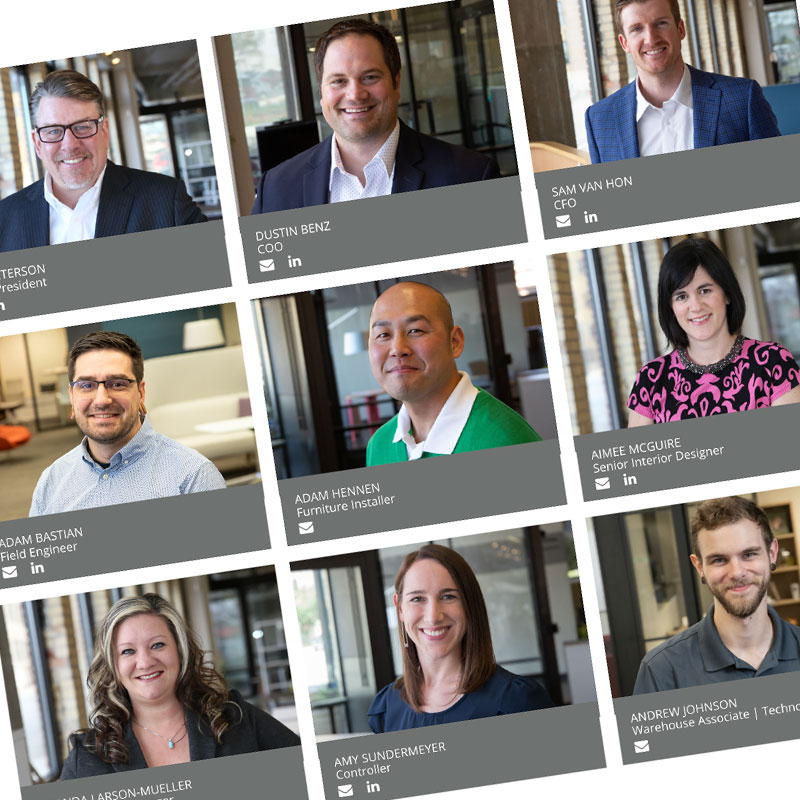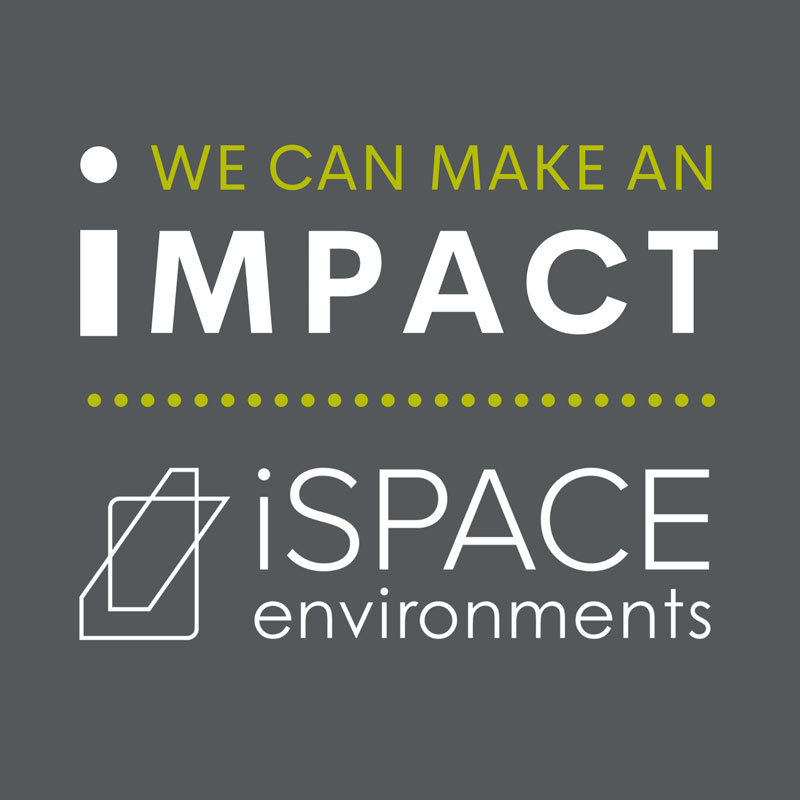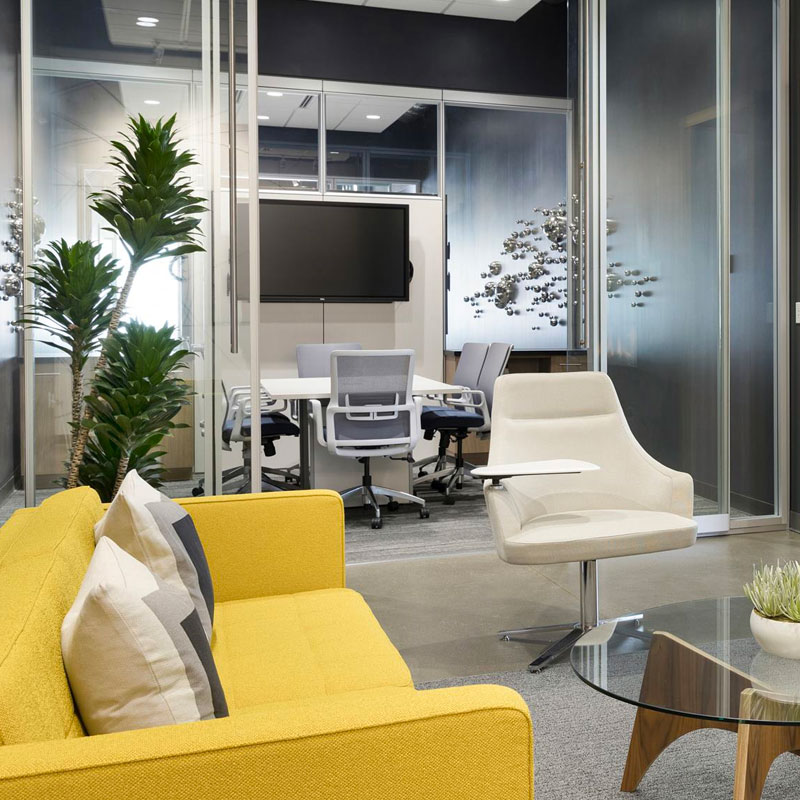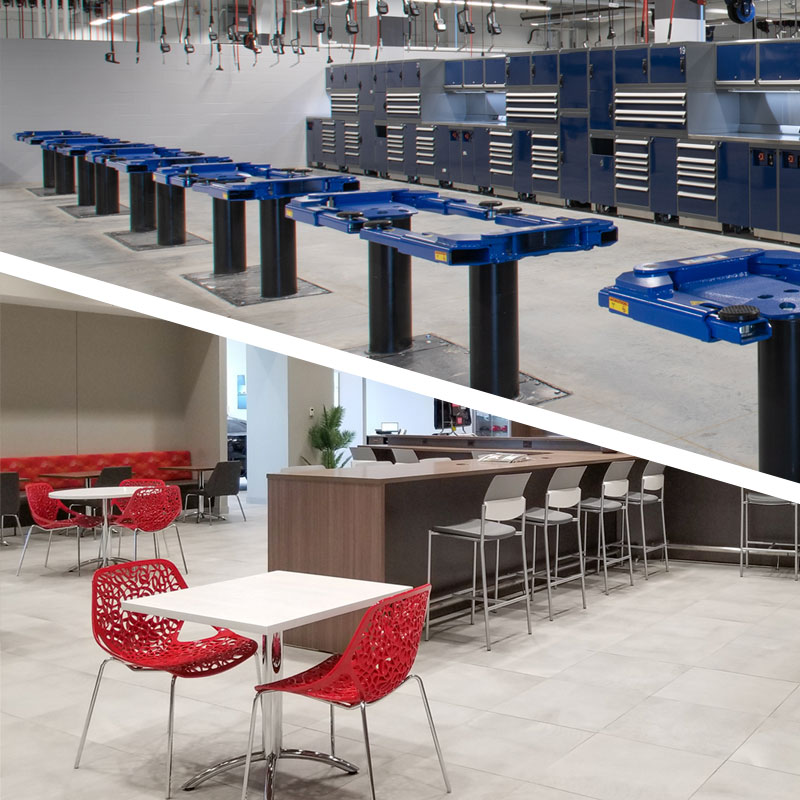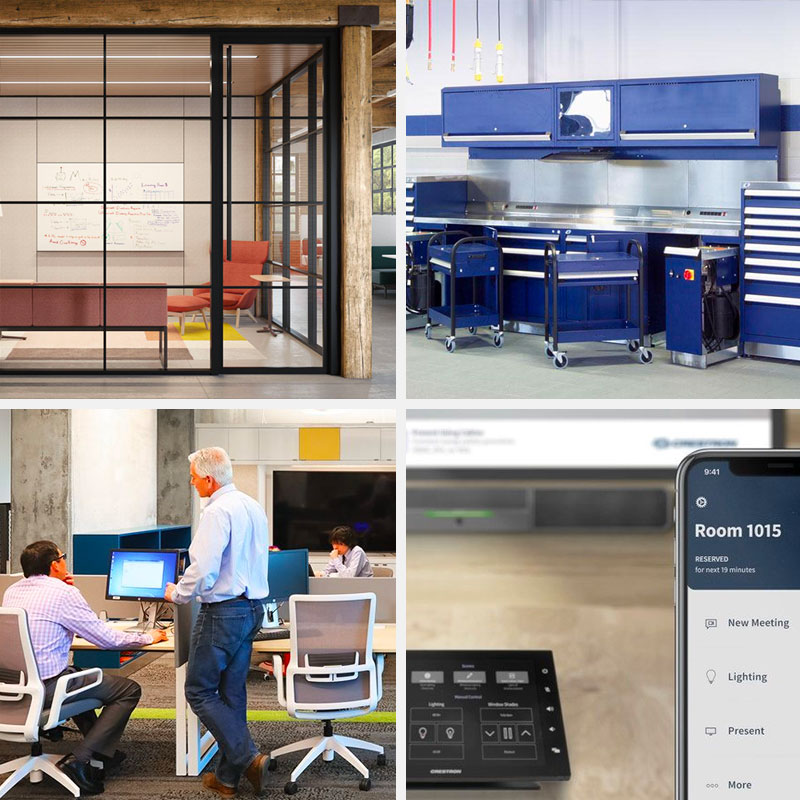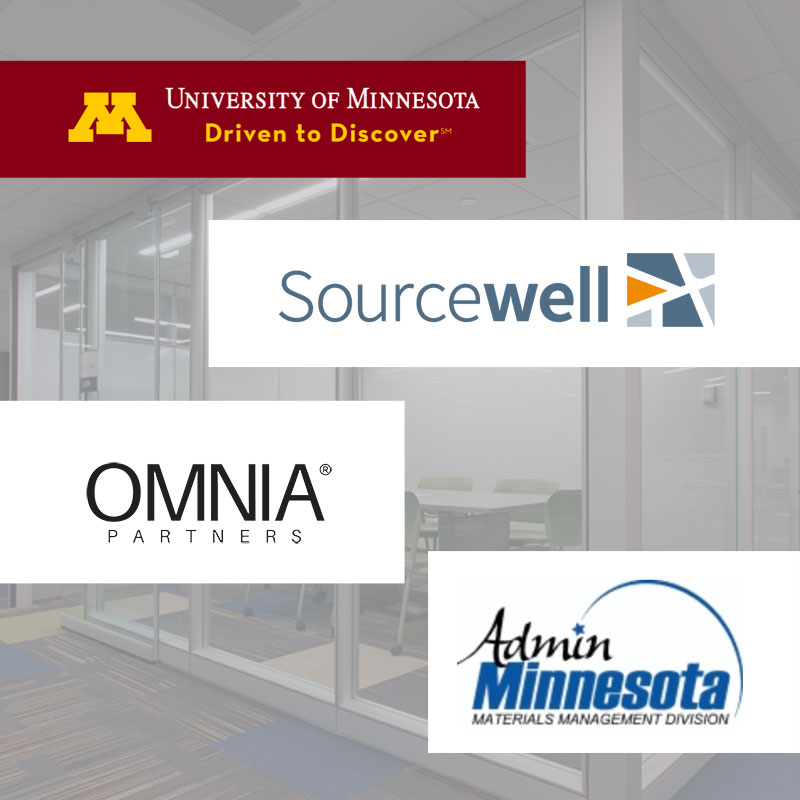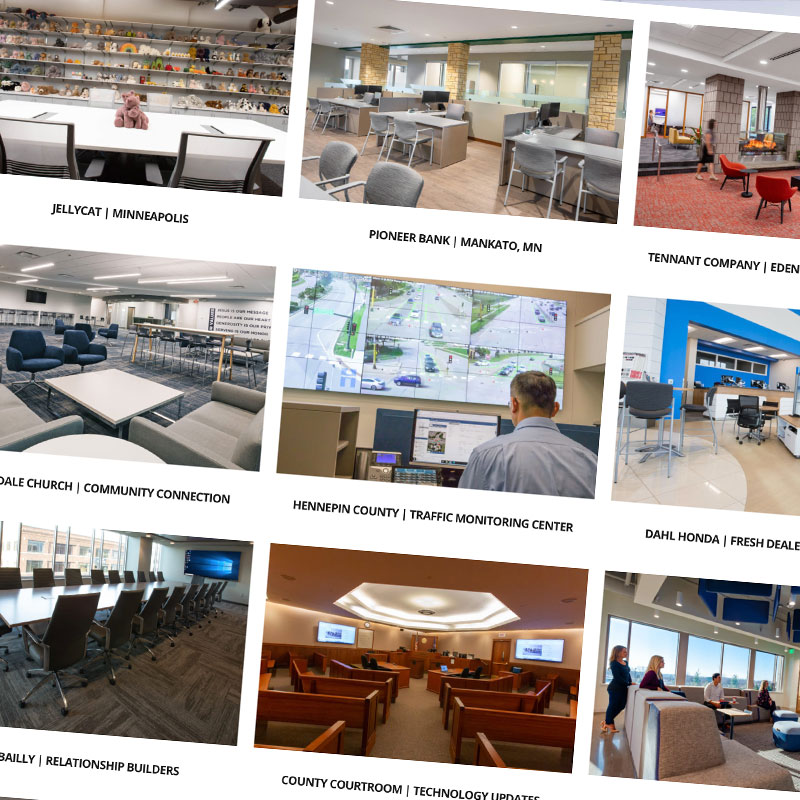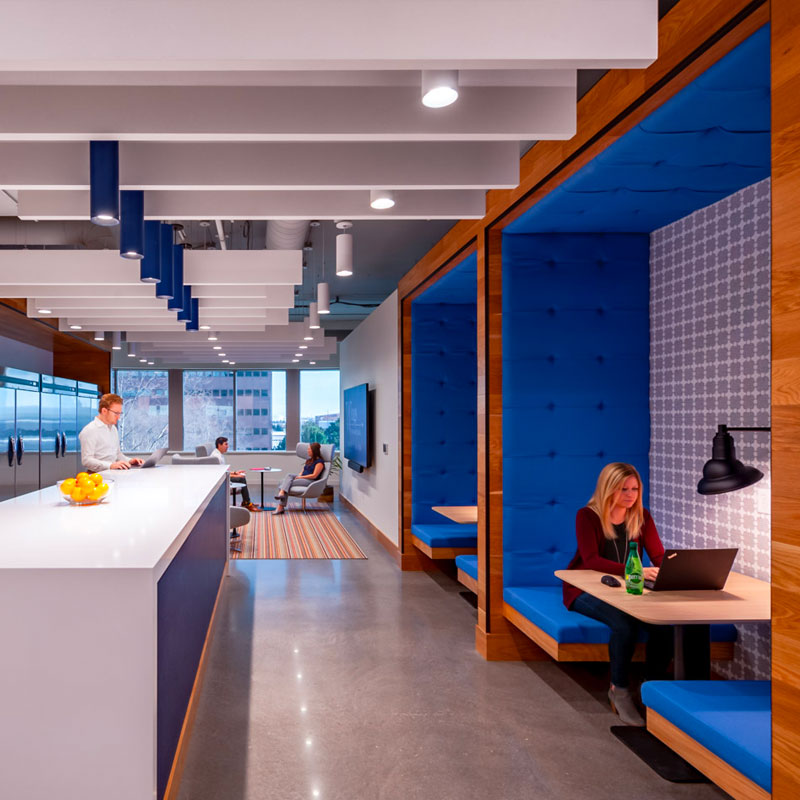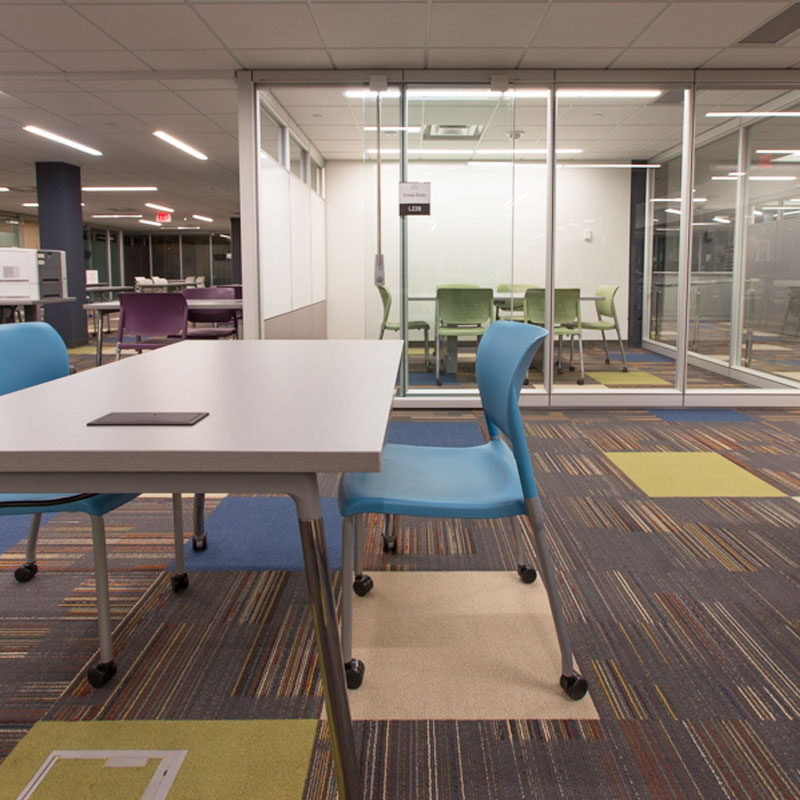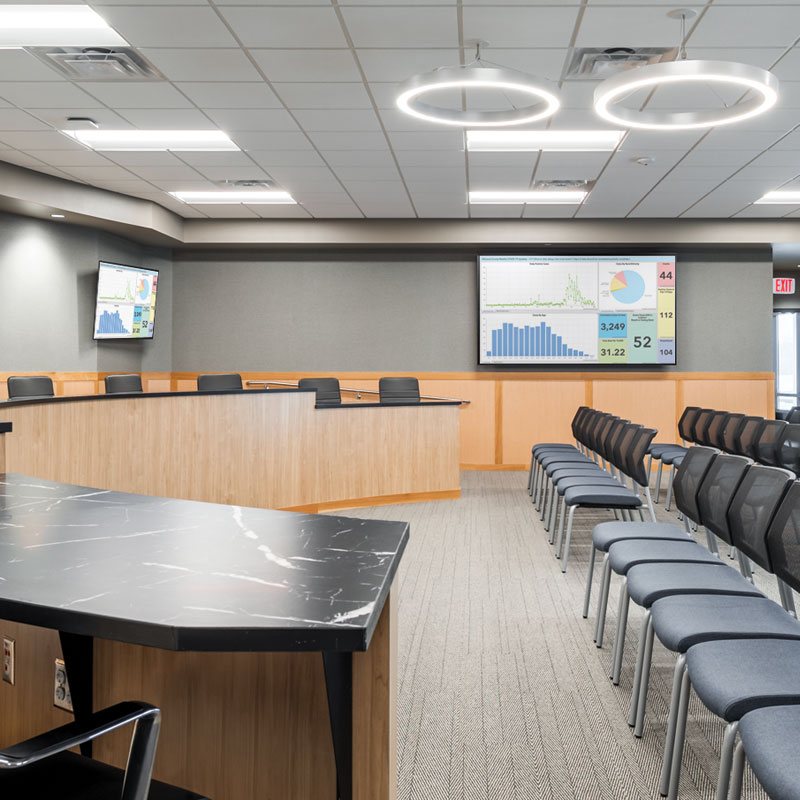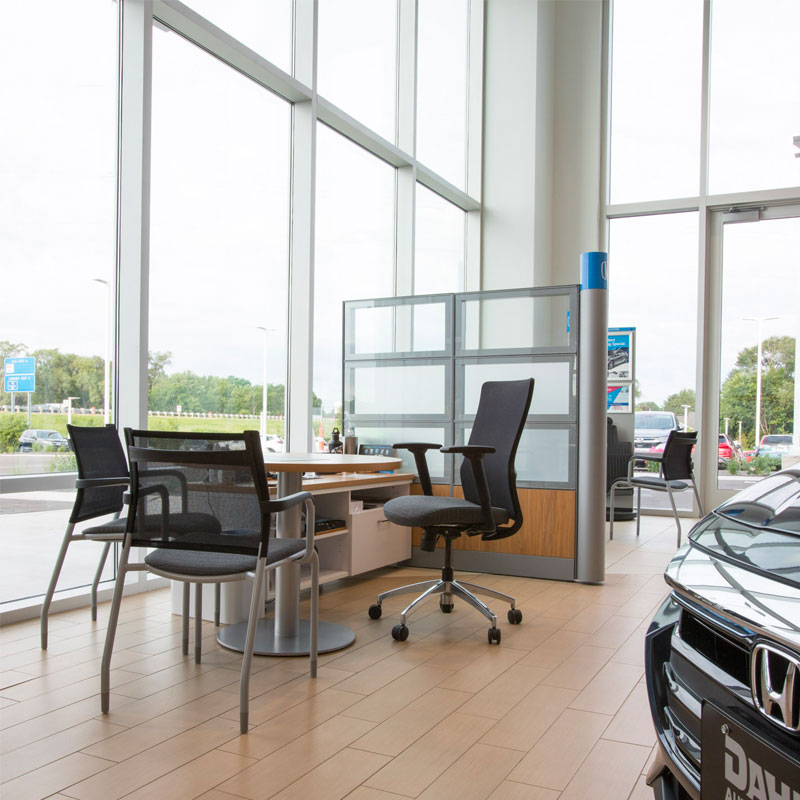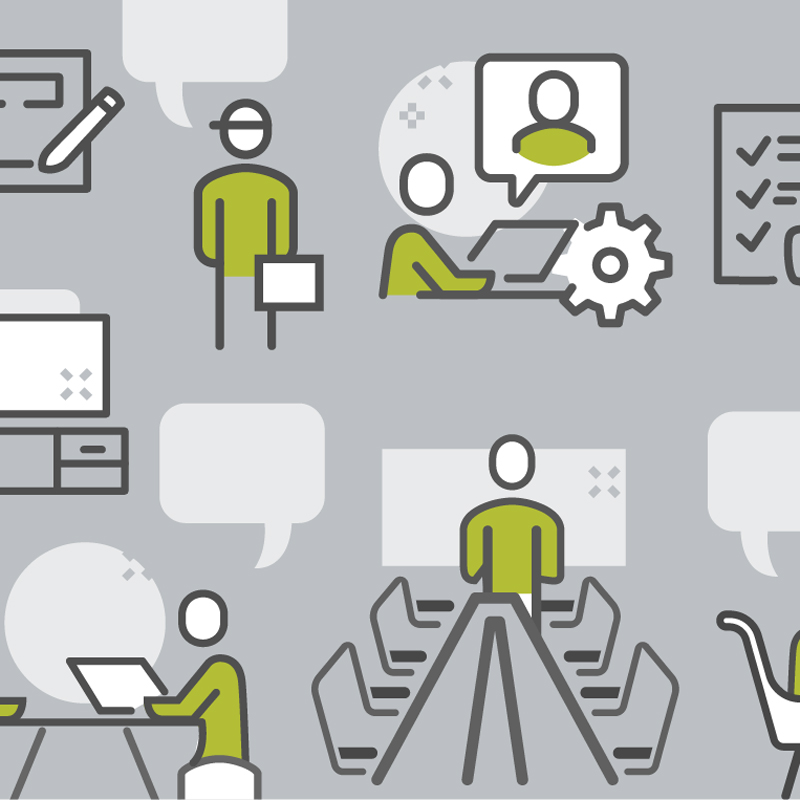The “open-office” has given us new opportunities for incidental collaboration, a sense of community, a chance to engage with a diverse range of people…and the potential for a lot of traveling voices; that not-so-sweet sound of disruption.
Sound like something you’ve heard before? We’re guessing the answer is yes and while we fully support the benefits of the open-office, we can’t ignore the reported number one complaint by office workers – Sound Privacy.
The lack of Sound Privacy means that there is an opportunity to explore acoustic solutions, which, when done right, have proven to reduce error, increase productivity, and create an environment where workers feel fully supported.
First, let’s bust a myth.
MYTH: High cubicle partitions mean less noise, more privacy, and fewer distractions.
REALITY: Not true. Research shows that higher cubicle partitions block standing line of sight but provide small amounts of additional acoustical shielding. But this increase in “visual privacy” may encourage people to talk louder because they think they have more privacy. Unfortunately, sometimes there may be less privacy and more disruption.
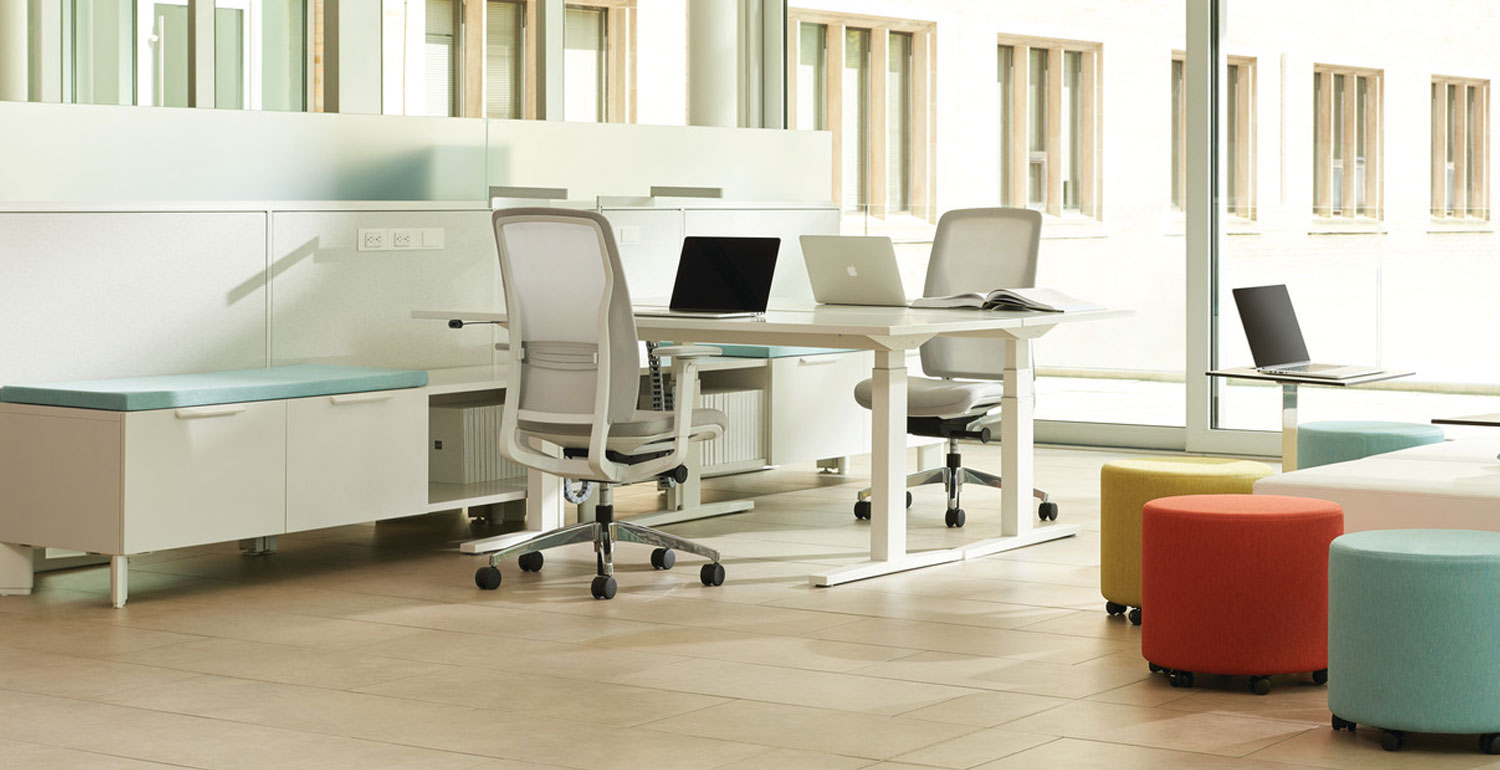
Second, let’s understand the complaint better.
Common factors in sound that cause distractions:
- Environmental Sounds:
- The faint sounds of the news running on the reception tv, the sound of muffled vehicle engines whizzing by, the latest pop-singer phenomenon on the radio
- Unpredictable conversations or intermittent speech:
- Bursts of laughter from the holiday party planning committee, your co-worker that is an expert “cold-caller,” the webinar that only requires a nod or seldom “yes I am still present,” and the daily verbal panderers (you know the ones with a constant stream of questions)
- Unexpected frequencies or changes in volume and rhythm:
- The clicking of the printer running a short series of prints through the copier, the co-worker with all-season allergies still sniffling from the last burst of sneezes, the high frequency buzz of the dying fluorescent lights, or the heavy gum chewer popping bubbles
What makes these things distracting?
- Sound travels, reflects, refracts, and attenuates based on the setting and the elements within your environment
Can we solve for these noisy nuances?
- Absolutely!
Along with the architecture and design community, general contractors, and our partner manufacturers, we look at the three best ways to intercept sound and keep control of disruptive sounds and voices.
We Absorb. We Block. We Cover.
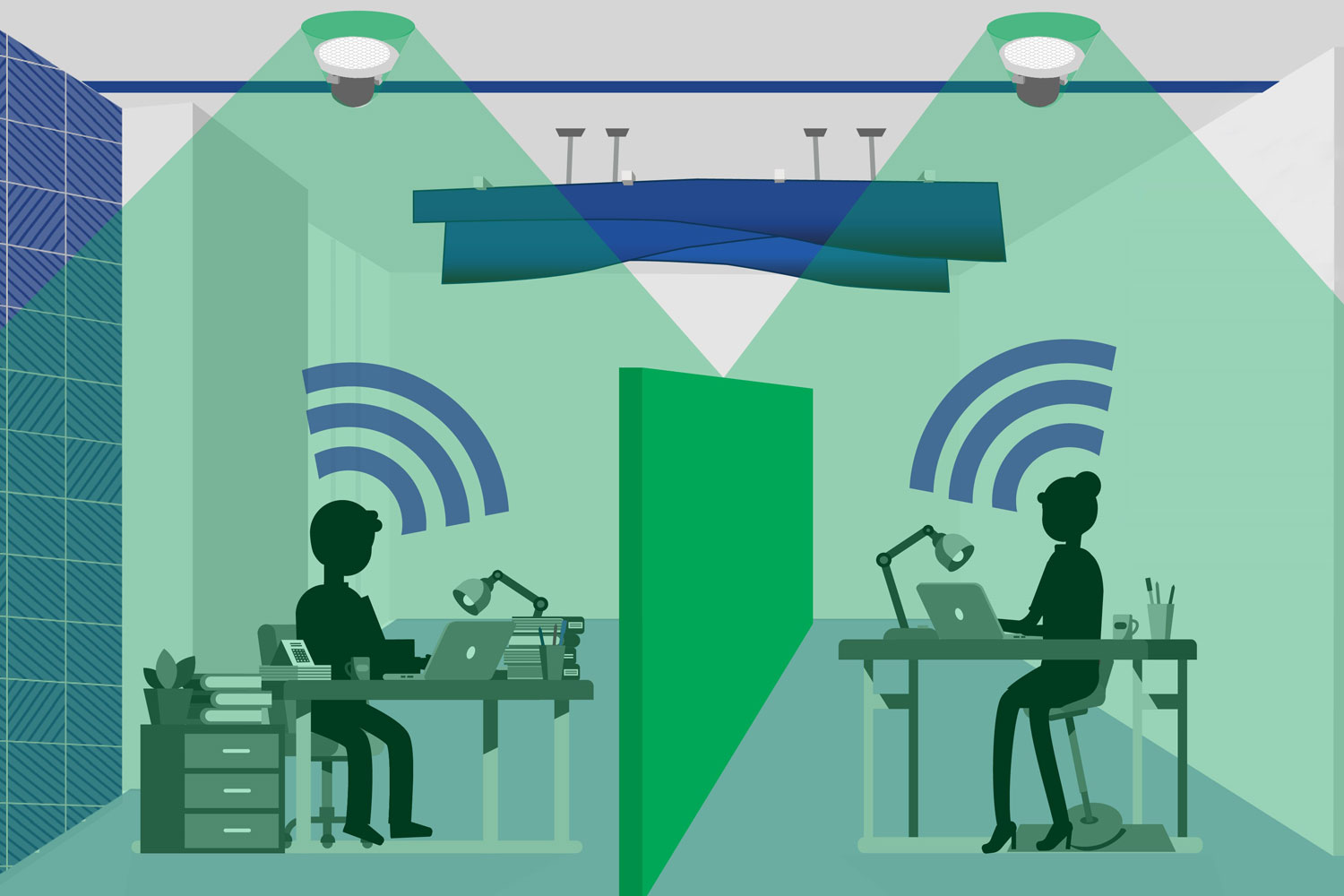
Absorption looks like: BuzziShade (Acoustic Light Fixture), Turf – Carve (Acoustic Wall Element), Tandus – Allee (Carpet Tiles), and Turf – Leaf (Acoustic Ceiling Element). These components reduce the strength of sound as it passes through an obstruction. Note: all absorption may make a room too silent which is why it is often used with blocking and covering.

Blocking looks like: Teknion – Zones Screen, Studio TK Qui Reconfigurable Screens, Teknion – Cityline Desk Edge Screens as well as cubicle panels and similar products. Blocking directs sound from one space to another, which works well used with absorption, but does not create fully resolve the disruption of traveling sound and voices.

Covering looks like the Sound Masking system by Speech Privacy Systems shown below. This collaboration between iSpace Environments, Speech Privacy Systems and our client ensured that sound could be controlled throughout the entirety of the workplace, minimizing a disruptive change of volume and intelligibility from one zone to the next. Sound Masking (Covering) is a low level controlled sound known that can be mistaken for a quiet hush of air-flow. By covering sound in combination with absorption and blocking, we can make voices less intelligible, thus causing less distractions and disruptions.

Other Fun Facts:
- Sound can take on many shapes, watch this video!
- It doesn’t have to be quiet to remove the noisy distractions.
- Introverts and Extroverts experience sound disruption differently.
- Sound is a vibration, so when you hear something, you are literally feeling it too. You know that feeling when “I love Rock N Roll” comes on and you can’t help but break out your dance moves.
- Sound travels at a distance of 761 mph which would equate the to the approximate distance of a road trip from Minneapolis to Chicago and back within an hour (give or take a few miles).
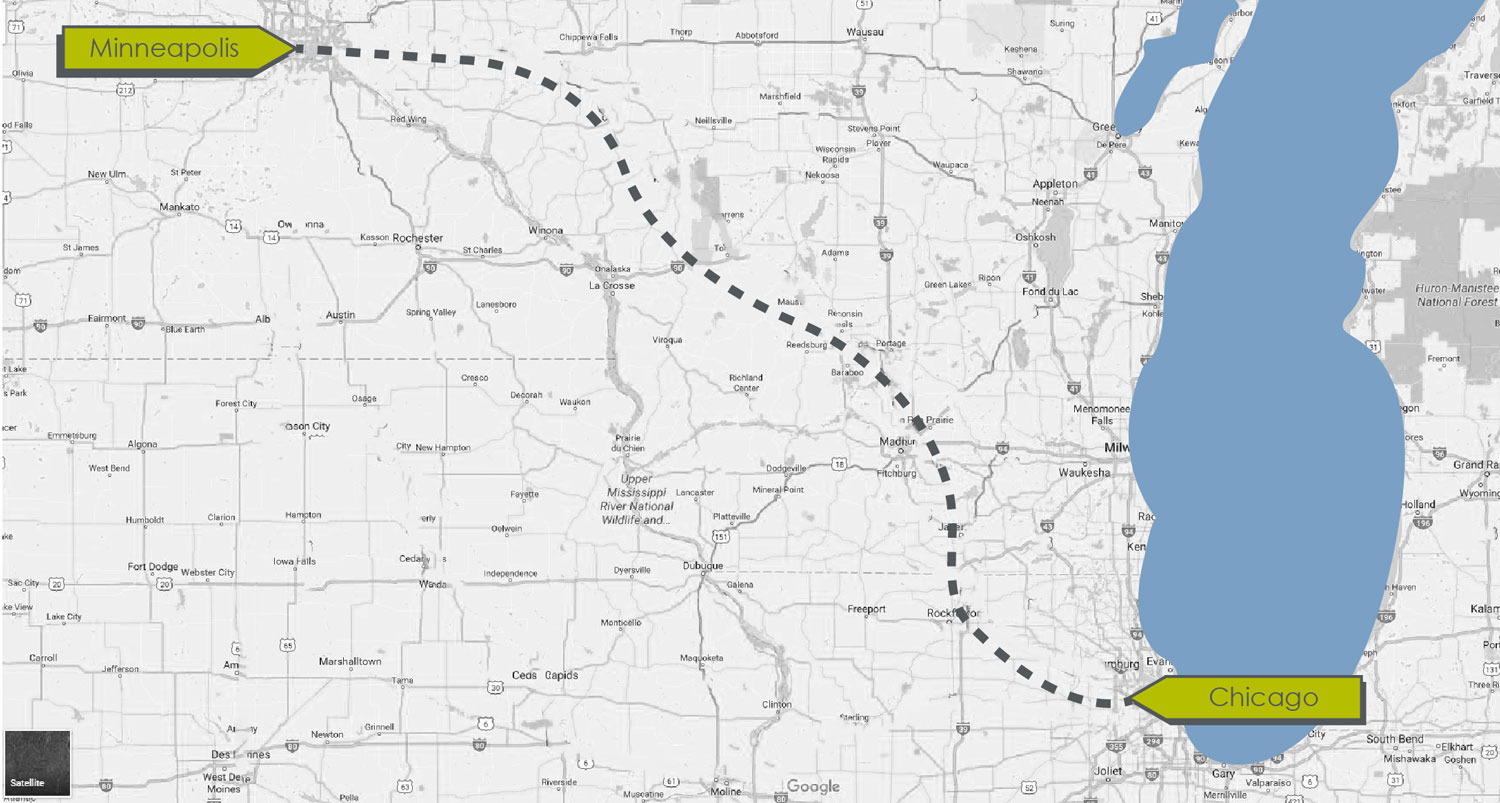
““It is the intelligibility of the sound that determines its distracting power”
– V. Hongisto
Sources:
https://speechprivacysystems.com/sound-masking-vs-cancellation-2/
https://www.wbdg.org/FFC/GSA/gsa_soundmatters.pdf
https://hbr.org/2015/12/muting-unwanted-noise-in-an-open-office
https://www.cbe.berkeley.edu/research/acoustic_poe.htm
http://journals.sagepub.com/doi/abs/10.1177/0305735607076444
https://www.fastcompany.com/3051835/how-background-noise-affects-the-way-you-work
https://www.khanacademy.org/science/physics/mechanical-waves-and-sound/sound-topic/v/speed-of-sound
Want to learn more about controlling acoustics in an environment?
Contact your iSpace Account Manager or email us if you would like to inquire on our services.



